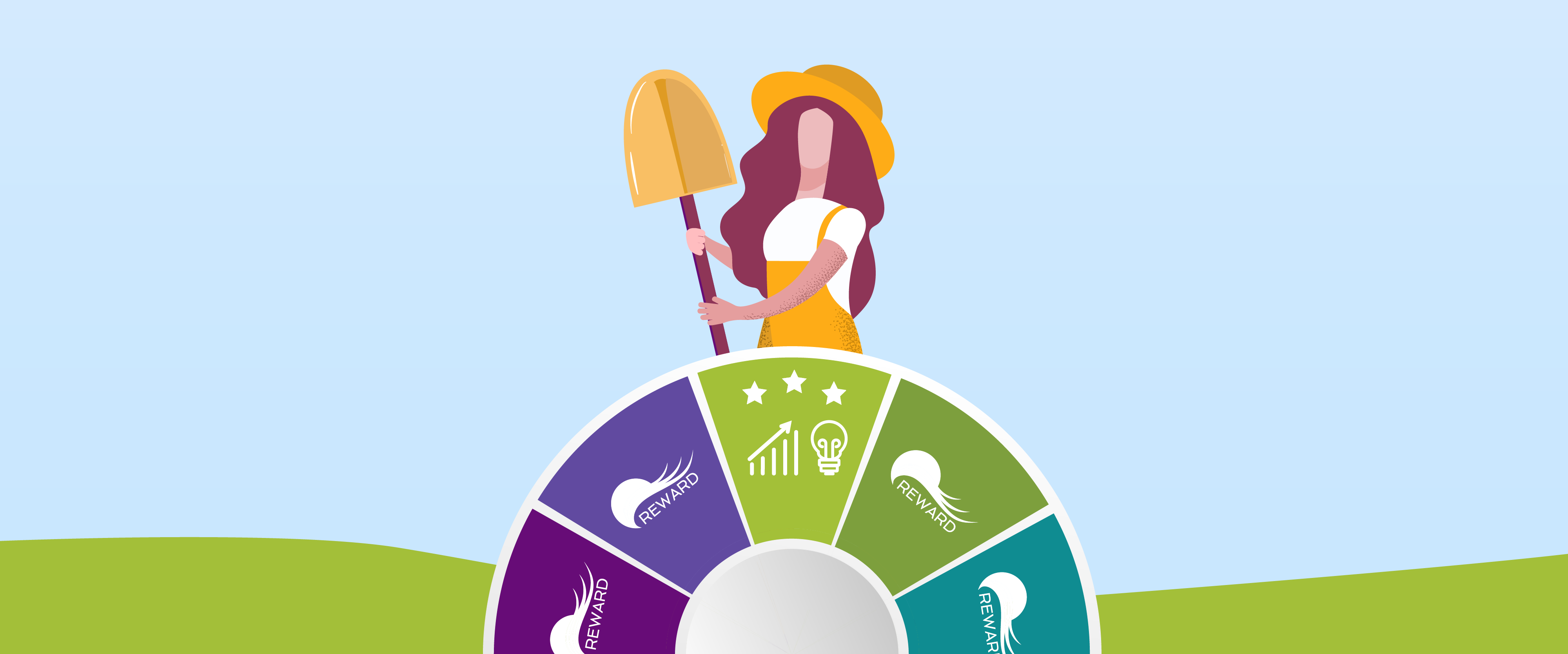OVERVIEW
The module introduces the issues of multifunctional agriculture as a direction of rural development and the possibility of creating new jobs in the countryside. In particular, it concentrates on the conditions for the development of female entrepreneurship. The issue is related to the values of the village’s cultural heritage.
LEARNING OBJECTIVES
Knowledge:
You will be able to identify the direction of contemporary rural development in Europe and comprehend the conditions and meaning of the different types of multifunctional farming linked to cultural heritage for sustainable rural economy and improving the employability of rural women.
Skills:
You will be able to seek opportunities to develop your own multifunctional farming and cultural heritage business including the ability to use EU support instruments.
Competences:
- 1.1. General regulations of rural development on European and national level - mechanisms and regulations used by the EU regarding rural development, parities and the equation of opportunities
- 1.2. Policy in rural development by the CAP - mainly assumptions about women’s development and activities
- 1.3. Possibilities of financing activities mainly by the European funds for rural areas directed to the countryside, among others Rural Development Programme, European Social Fund
- 1.4. Good examples of women’s entrepreneurship taking advantage from EU funds in the period 2013-2020 - opportunities for entrepreneurship development in rural areas
Role of women in the EU
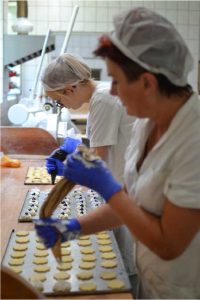
Photo. K.Boba
► Gender equality is a fundamental value of the European Union already expressed in the Treaty of Rome of 1957, which lays down the principle of equal pay for the same work. Europe is currently one of the safest and most just places in the world for women.
- Women in Europe should enjoy equality, empowerment and security, for too many of them these rights are not yet reality. Statistics show that women are under-represented in decision-making positions in politics and business, and still earn 16% less than men across the EU. Gender-based violence and harassment are still widespread.
- The European Union is trying to tackle the small percentage of women working on farms. Only 30% on average farms were managed by women (Eurostat 2013). However, this average number does not fully reflect reality, because while in Lithuania as much as 47 percent. households operate under the watchful eye of women, in the Netherlands only 5 percent.
- At the same time, a global survey by Corteva Agriscience showed that agricultural Europeans still feel discriminated against on grounds of sex (68% - however, the report only included 4 European countries: France, Spain, the United Kingdom and Italy).
- In April 2017, the European Parliament adopted a report calling for increasing the role of women in EU agriculture. EU lawmakers believe that women can play a key role in renewing rural areas that do not have to be condemned to urbanisation.
Rural development
- Rural development is a process of structural changes in the increasingly complex economic, social, cultural, technological and environmental spheres of the rural area, which aims at improving standards of living and quality of life in an equitable, sustainable and efficient way.
- In order to achieve such an objective, it is crucial that all social groups in rural areas, including the young and old, women and men, be involved and participate actively. Rational use and management of endogenous natural resources, economic capacities and human capital needs to be ensured.
- Rural development policies valorise and make efficient use of specific endogenous and potentially competitive advantages, diversify employment options and enhance entrepreneurial and other innovative activities in all spheres of life.
- Gender asymmetries means inequities and/or imbalances between women and men in age composition, social status, educational levels, employment and other economic opportunities, and participation in decision-making.
- Such asymmetries have traditionally been mostly at the expense of women. Even when the rural world is undergoing socio-economic transformations, the gaps between female and male members of society tend to be the last ones narrowed or eliminated.
EU ACTIONS
- The EU aims to provide women with the same opportunities at work as men, e.g. equal pay rights.
- It also helps both men and women to achieve a balance between work and other areas of life.
- The EU also promotes gender equality in decision-making positions.
- The work of the European Commission in all these areas is based on its strategic commitment to gender equality in 2016-2019.
- In 2017, the EU presented an action plan to close the gender pay gap. The plan addresses issues such as stereotypes and work-life balance, and calls on governments, employers and trade unions to take action to ensure that women’s pay is fair.
EU ACTION FOR WOMEN
To read more about:
- Eu actions to improve gender equality and balance between professional and private life.
- How the eu is assisting women in the world of work.
- Stopping violence against women.
- Promoting equality and protecting your rights.
- Progress for women in politics and decision-making.
- Improving lives worldwide.
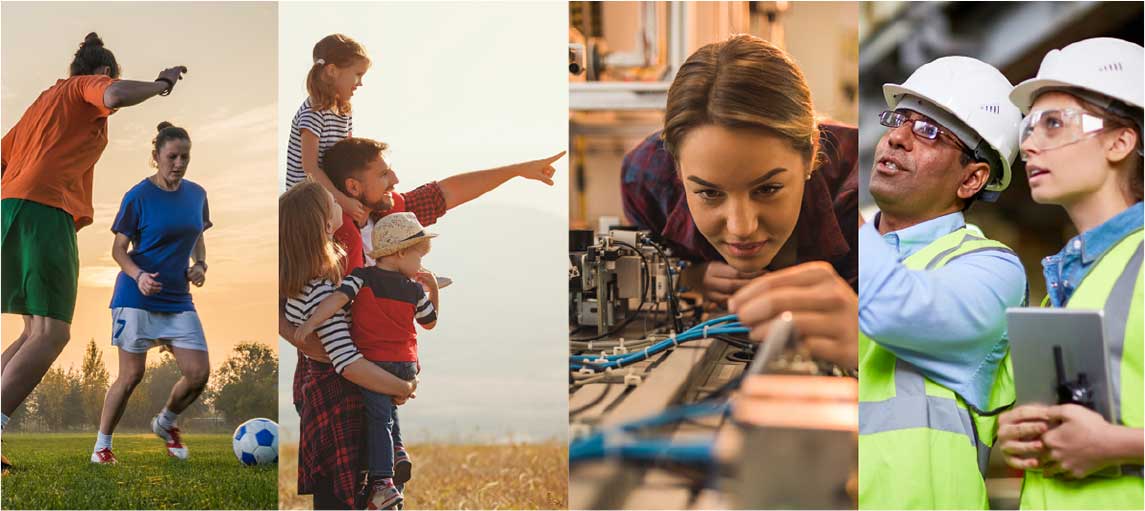
The EU provides funding for a broad range of projects and programmes covering areas such as:
- Regional & urban development.
- Employment & social inclusion.
- Agriculture & rural development.
- Maritime & fisheries policies.
- Research & innovation.
- Humanitarian aid.
Policies
► Agriculture and environment: The EU has a range of policies to address issues faced by farming such as climate change, biodiversity loss and other challenges to natural resources.
► Direct support and transparency: The CAP Direct Payments system provides support for farm incomes, linked to respecting a range of EU rules, including the new “Greening” requirements.
► Rural development: The EU’s rural development programmes help people and companies in rural areas address economic, environmental and social challenges and opportunities.
► Organic farming: EU laws ensure that ‘organic’ means the same for consumers and producers, with EU-wide regulations that cover the organic farming supply chain.
► Quality of farming products: EU quality schemes, such as geographical indications, protect and guarantee a particular know-how and a specific link with a geographical area.
► Trade and promotion: The EU food sector has been able to expand exports, helped by EU trade agreements and enhanced promotion activities on non-EU markets.
► Forestry: EU rural development funds support the implementation of sustainable forest management by EU countries, also improving competitiveness and creating jobs.
► Agricultural markets and analysis: With a more market-oriented sector, market transparency and analysis is needed to anticipate trends, while certain policy tools remain available.
Management of funds
- Funding is managed according to strict rules to ensure there is tight control over how funds are used and that the money is spent in a transparent, accountable manner.
- As a group, the 27 EU Commissioners have the ultimate political responsibility for ensuring that EU funds are spent properly. But because most of the funding is managed within the beneficiary countries, responsibility for conducting checks and annual audits lies with national governments.
► Over 76% of the EU budget is managed in partnership with national and regional authorities through a system of “shared management”, largely through 5 big funds - the Structural & Investment Funds.
► Collectively, these help to implement the Europe 2020 strategy.
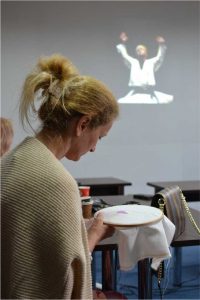
Photo. K.Boba
CAP
- The common agricultural policy (CAP) – one of Europe’s oldest policies – has evolved along with the EU
- Today’s CAP supports a modern, market-oriented farming sector ensuring the provision of safe, affordable, high quality food, produced sustainably and respecting strict standards (environmental, animal welfare, food safety, etc), as well as supporting investment in the broader rural economy.
The 9 objectives of the future CAP are:
- To ensure a fair income to farmers;
- To increase competitiveness;
- To rebalance the power in the food chain;
- Climate change action;
- Environmental care;
- To preserve landscapes and biodiversity;
- To support generational renewal;
- Vibrant rural areas;
- To protect food and health quality.
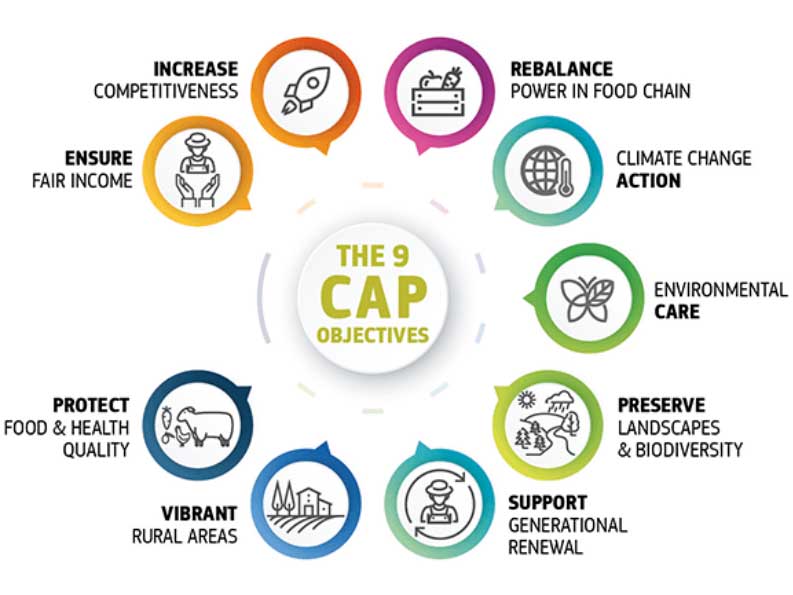
Source: The 9 CAP objectives
Key aspects of the proposals:
- Better targeting for a fairer deal: To ensure stability and predictability, income support will remain an essential part of the CAP. Part of this, basic payments will continue to be based on the farm’s size in hectares. However, the future CAP wants to prioritise small and medium-sized farms and encourage young farmers to join the profession.
- Higher ambition on environmental and climate action: Farmers play a key role in tackling climate change, protecting the environment and preserving landscapes and biodiversity. In its proposal, the European Commission sets high ambitions on environmental and climate change.
- Farmers at the heart of Europe’s society: Farmers are at the heart of Europe’s rural communities, providing vital public goods.
How does the eu help women in the world of work?
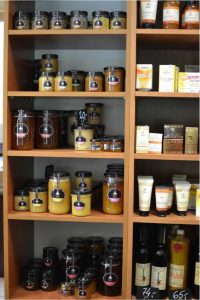
Photo. K.Boba
► The EU takes into account the specific needs of women in various spending programmes and policies, and the European Social Fund helps millions of people facing different challenges improve their employability every year.
► Specific actions to help women find a job include retraining and upgrading programmes. The fund also enables women to return to work after a career break, e.g. by providing high-quality childcare and individual counselling, and by improving employers’ awareness of the challenges women face. The European Social Fund supports projects in your country. These numerous successful initiatives contribute to real changes in the lives of citizens.
► Projects funded in EU regions create new opportunities for women by providing them with access to finance, personalised support or advice to start a business. Programmes and projects are also implemented in your country or region.
► The WEgate platform is a one-stop shop for women who want to start or develop a business. It contains information on training, mentoring, consulting and networking. You can also find information on how EU loans and venture capital enable people to set up or develop a business.
► The EU is also taking action to increase women’s participation in the digital sector by breaking stereotypes, promoting education and training in digital skills, and encouraging more female entrepreneurs to be active in the sector. The European Network for Women in the Digital Sector was created in 2018 so that girls and women active in this sector can create networks and collaborate on ideas and experiences in this field. Around 20 technology companies have also committed to creating an inclusive and gender-friendly work culture and environment.
► The EU is also committed to reducing the gender gap in research and innovation. For example, under Horizon 2020, it supports research organisations and universities in implementing gender equality plans. The European Innovation Prize awarded every year is an expression of recognition for women who are not only outstanding scientists and innovators, but also successful entrepreneurs. The EU is also working to improve women’s employment in other sectors such as transport.
Support tools for female entrepreneurs
► The Commission supports several tools such as networks and an e-platform helping women become entrepreneurs and run successful businesses:
► WEgate-platform: a one-stop-shop for women entrepreneurship
- The European Community of Women Business Angels and women entrepreneurs
- The European network to promote women’s entrepreneurship (WES)
- The European network of female entrepreneurship ambassadors
- The European Network of Mentors for Women Entrepreneurs
Applying for funding
- Small businesses: Can obtain EU funding through grants, loans and guarantees. Grants provide direct support, while other funding is available through programmes managed nationally.
► EU funding for small businesses
- Non-governmental & civil society organisations: May be eligible for funding, provided they are active in EU policy areas and on a non-profit basis.
► EU funding for NGOs by policy area
Farmers & rural businesses
- Most farmers in the EU are eligible for direct income-support payments. Around a third of these are given in return for green farming practices (maintaining permanent grassland, crop diversification, etc.).
- Farmers also receive money based on the amount of land they hold – again in return for employing eco-friendly farming methods that preserve biodiversity, soil and water quality and keep emissions low.
- EU funding also helps farmers train in new techniques and upgrade or restructure their farms. And it is also applied more broadly to improve life in rural areas, by creating jobs and providing basic services.
- In addition, under rural development, young farmers can benefit from specific support for setting-up their business as well as from higher support rates for investment they make in the business.
Female entrepreneurs
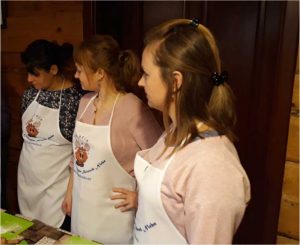
Photo. K.Boba
Even though there are more women than men in Europe, female entrepreneurs represent only a third of the self-employed in the EU. There are some additional factors (such as reconciling business and family) that make entrepreneurship a less attractive option for them than for men. The European Commission is working with EU countries to overcome these and encourage more women to start their own companies.
Current situation of female entrepreneurs in the EU:
- Women constitute 52% of the total european population but only 34.4% Of the eu self-employed and 30% of start-up entrepreneurs
- Female creativity and entrepreneurial potential are an under-exploited source of economic growth and jobs that should be further developed.
Main challenges faced by female entrepreneurs
When establishing and running a business, women face challenges such as:
- Access to information
- Training
- Access to networks for business purposes
- Reconciling business and family concerns.
What the Commission does
► The Commission promotes and supports female entrepreneurship through the Small Business Act and the Entrepreneurship 2020 Action Plan.
- One of the Commission’s main initiatives is to support networking among female entrepreneurs, potential female entrepreneurs, and support organisations.
► The EU Prize for Women Innovators is awarded to women who have received EU research and innovation funding at some point in their careers, and recently founded or co-founded a successful company based on their innovative ideas. See the 2017 winners.
► List of Ambassadors in the European Network of Female Entrepreneurship.
► List of national contacts and mentors in the European Network of Mentors for Women Entrepreneurs.
Supporting documents
► Study on “Statistical data on Women entrepreneurs in Europe” (3 MB) (2014). Data shows that women entrepreneurs constitute 29% of entrepreneurs (11.6 million) in Europe. Since 2008 there has been an increase of women entrepreneurs in the EU of 3%. Women represent the majority of one-person enterprises in the EU (78%) and they prefer to set up businesses in the area of health, social-work activities, services or education. The study was carried out in the EU plus Albania, North Macedonia, Iceland, Israel, Liechtenstein, Montenegro, Norway, Serbia and Turkey.
► Read the study and the annex
► See the individual country files
► Study on female innovators and entrepreneurship
Good pracices vs. good examples
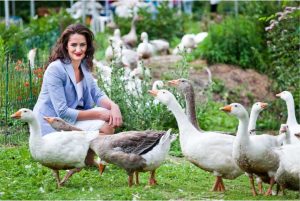
Photo. Educational Farm “Pszczółki”, PL
The educational farm “Pszczółki” benefited from the support of the Agency for Restructuring and Modernisation of Agriculture for the possibility of submitting applications for aid under the sub-measure “Support for investments in the processing of agricultural products, trade in them or their development” covered by the Rural Development Programme for 2014-2020 by farmers or the spouses of these farmers to carry out or undertake activities in the field of processing and sale of processed agricultural products as part of agricultural retail trade and agro-training for older people for establishing or running care farms based on 12 universal scenarios of activities.
► Read more HERE: Educational farm “Pszczółki”

Photo. Oleacosmetcos, ES
Olea Cosmetics originally emerged as an association of 7 women from Pegalajar, who decided to produce cosmetic products based on Olive Oil. The strong financing necessary to produce, as well as the need to be able to bill their sales, led them to set up as a limited company, since this legal structure was the simplest in case of liquidating the company. Initially they had to face a large financing of more than 400k Euros, which forced them to look for different sources of financing. They had EU funds from the LEADER programme but additionally they needed private third-party financing through banks.
► Read more HERE: Olea cosmetics
- 2.1 Definition of multifunctional farming and its meaning for rural development
- 2.2 Types and specifics of mutifunctional farming
- 2.3. Business development conditions and job opportunities in multifunctional farming
- 2.4. Women’s success in multifunctional farming
Multifunctional farming is defined as obtaining added value of the basic agricultural activity by introducing additional functions based on the resources of an agricultural holding.
Multifunctional Agriculture (MFA)
- The concept of MFA means that, in addition to producing food, agriculture has other functions such as development of rural landscapes, growth of natural and cultural heritage, support of the rural economy and enhancement of food security.
- The OECD perspective of Multifunctionality is of an agriculture that jointly produces a range of commodity outputs (food and fibre) and also a range of non-commodity outputs, including environmental and social products and services.
Source: C 347/38 EN Official Journal of the European Union 18.12.2010
Multifunctional Farming (MF)
- MF means combining agricultural activities with professional services based on the value of a farm. This concept refers to non-agricultural activities located at the farm and often closely linked to farming.
- Family farmers develop new economic activities within the farm in addition to conventional farming. Multifunctional activities contribute to sustaining food production itself.
- New productive and distributive activities are also referred to as ‘other gainful activities’.
Source: Jan Douwe van der Ploeg,Wageningen University and Research Centre, the Netherlands
- MF is an umbrella term used to indicate companies that combine their agricultural production and environment with services to society:
- care farming,
- farm education,
- farm shops/short chains,
- agricultural day care,
- agricultural nature management
- agrotourism.
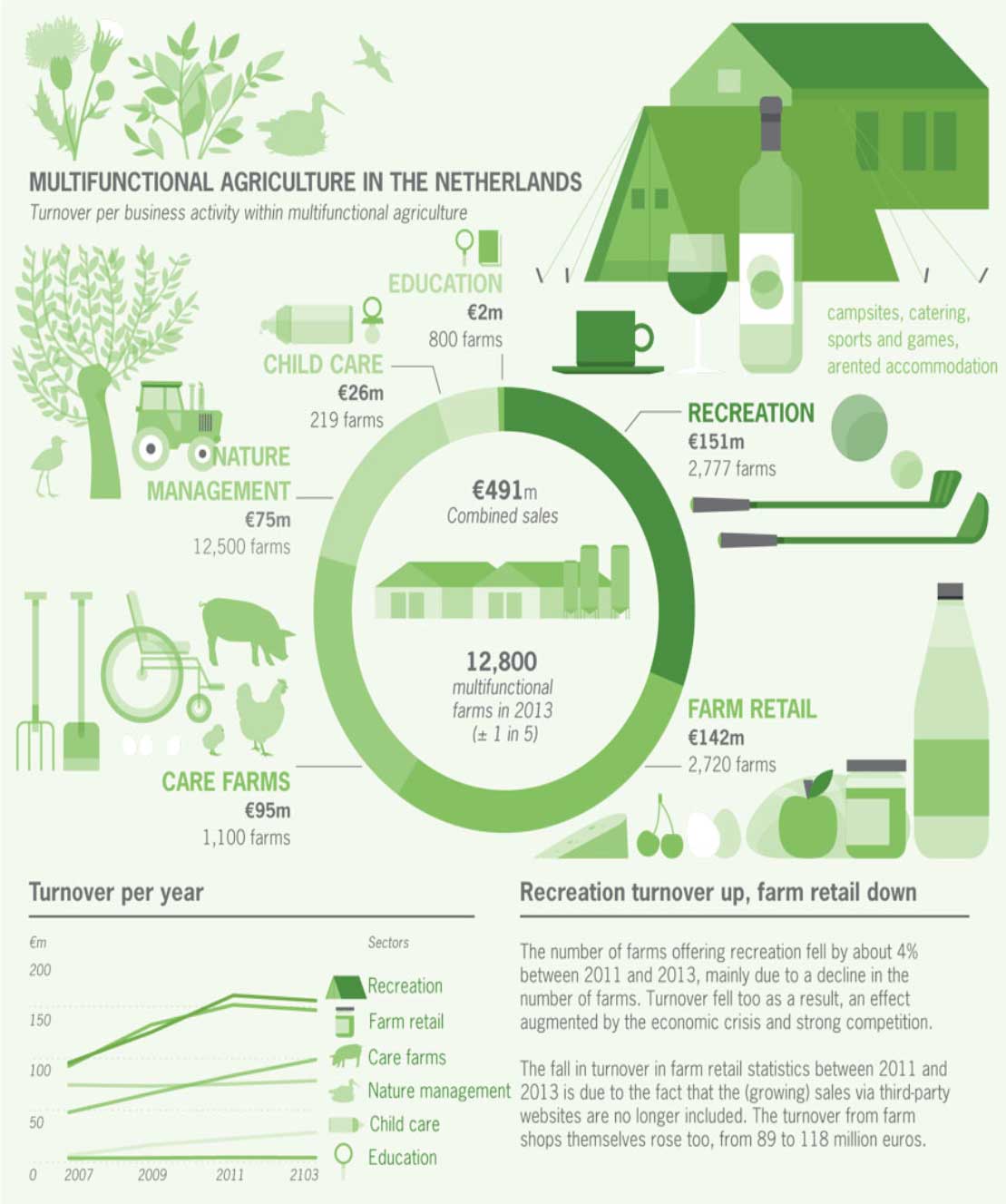
Source: Wagenigen University & Research
Multifunctional Agriculture (MFA)
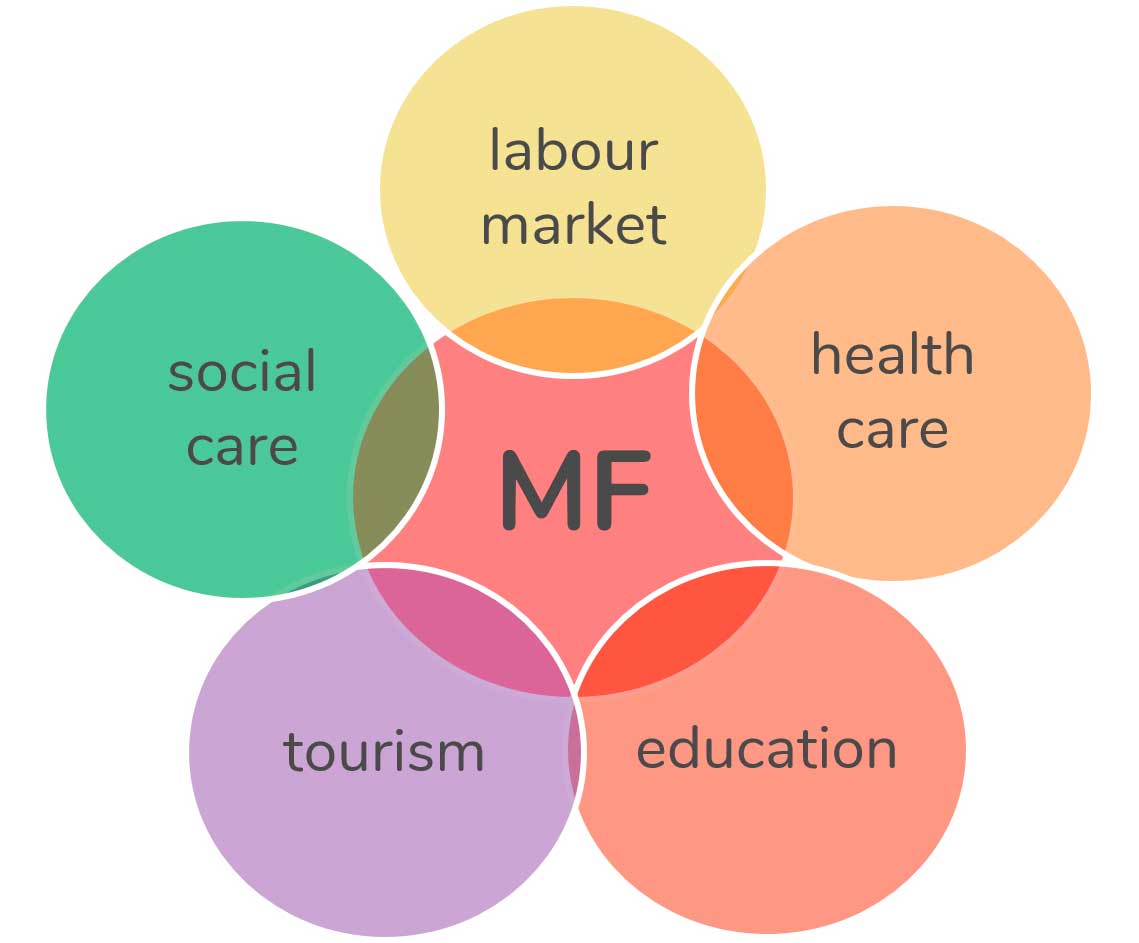
Agritourism joins Farming & Tourism services
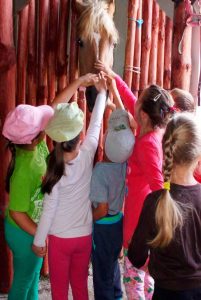
Photo. Educational Farm “Ranczo Artemidy”, PL
Possible services:
Basic tourism services:
- accommodation in a farm
- catering for guests
Additional tourism services:
- trip organisation and quiding
- organisation of events
- equipment rental (bikes, kayaks, skis, etc.)
- transport services
- health and beauty services
- social services
Farm resources:
- rooms and facilities for guests
- self catering flats or house for hiring
- place to set up a tent
- dining / kitchen for guests
- common rest room
- recreational garden
- additional tourism services facilities and equipment
- hobby workshop
- access to agricultural crops and livestock
Own attitudes:
- openness to other people
- smile for 24 hours per day
- diligence
- social commitment
Benefits:
- “contact with the world without leaving home”
- cultural exchange
- raising the importance of housewife’s work
- independence
- additional income / work place
► Sample: Andreja Bijzak
Andreja, together with her husband, runs a company whose main activity is sustainable rural tourism (accommodation, local cuisine, wellness). They also organise open days, various educational activities and forest pedagogy in the Fairytales Park.
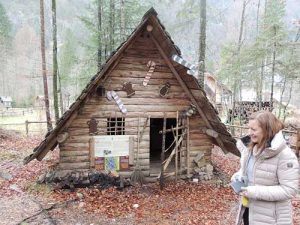
Didactic farm joins Farming & Education services
Possible services:
- Didactic programmes for school classes, adults and special interests groups
- Green schools
- Didactic path
- Open farm
Farm resources:
- agricultural crops and livestock adapted to be presented to participants of educational activities
- a covered place to conduct classes
- didactic boards, descriptions, marked paths
- farm based educational programs
Own attitudes:
- passion for countryside and agriculture
- communicativeness
- the joy of sharing knowledge
- orderliness
- willingness to own personal development
Benefits:
- variety in everyday life
- the pleasure of working with children
- personal development
- new perspectives
- additional income / workplace
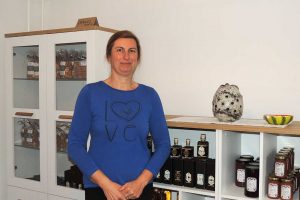 The Potočnik Poprask Organic Farm has held an organic certificate for 20 years, it is a mixed, self-sufficient farm.
The Potočnik Poprask Organic Farm has held an organic certificate for 20 years, it is a mixed, self-sufficient farm.
Tatjana transferred her experiences from school to a farm where she receives school groups to which she imparts knowledge of farm work as part of the cultural heritage of the countryside. She participates in shepherd’s days, she organizes sheep shear with neighbors help, for student’s groups.
Green Care joins Farming & Care services
Possible services:
- day care for dependent persons (seniors, disabled adults and children)
- round the clock care for dependent persons
- therapeutic classes based on:
- ecotherapy
- sylvanotherapy
- hortytherapy
- animalotherapy
- ergotherapy
- aulinary therapy
- art therapy
Farm resources:
- rooms and facilities adapted for dependent persons
- common room / kitchen for dependents to stay together
- workshop rooms
- designated crops / garden / parts of the farm adapted to activities
- animals adapted / trained for therapeutic contact
- agritherapy classes programmes
 Own attitudes:
Own attitudes:
- professional skills
- sensitivity
- resistance to stress
- patience
- focus on long-term action
Benefits:
- sense of mission
- satisfaction
- personal fulfillment
- additional income / workplace
- sell in own farm shop
- sale at the local market
- Internet sales
- joint sales initiatives
Farm resources:
- high-quality products from the farm (fresh and processed)
- facilities and equipment for preparation for sale
- storage and transport equipment
- technological line for processing (optional)
- place for the presentation / sale of products
Own attitudes:
- reliability
- cooperativeness
- culinary talents
- sensitivity to hygiene
- flexibility and creativity
Benefits:
- added value to a basic production
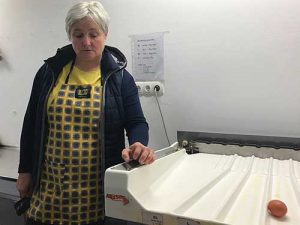 54 ha Poličar’s farm, run by Andreja Jagodic and her husband, is the most known for award winning dairy goods oeform “kajmak” and curd, milk, yoghurt and a rich variety of cheeses.
54 ha Poličar’s farm, run by Andreja Jagodic and her husband, is the most known for award winning dairy goods oeform “kajmak” and curd, milk, yoghurt and a rich variety of cheeses.
Most products are sold directly at home, in some co-operative shops and inns, and at various events where they sold in a special trailer with a built-in refrigerator.
Along with dairy products, they sell eggs, potatoes and vegetables. For extra income they are running a museum of millstones, one of its kind in Slovenia. Their slogan is: Everything we provide, we eat. Everything we eat, we offer to you. On our table in our store.
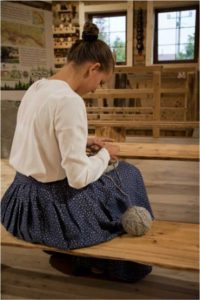
Photo. Educational Farm “Centrum pasterskie w Koniakowei”, PL
Women role in MF
- Women make significant contributions to the rural economy, and the concept of multifunctionality, as an essential basis for sustainable development strategies, though not yet fully exploited in all areas, have opened up new opportunities for women, with the help of innovation and the creation of new concepts which make it possible to inject fresh dynamism into farming;
- Women’s participation in the labour market in rural areas includes a wide spectrum of jobs that goes beyond conventional agriculture, and stresses in this regard that women in rural areas can be agents
of change in moving towards sustainable and ecologically sound agriculture and can play an important role in the creation of green jobs; - Women are very often the promoters of the development of additional activities on or outside the farm beyond the scope of agricultural production, making it possible to impart real added value to activities in rural areas;
- Women are actively involved in agricultural activities, entrepreneurship and tourism, and play an important role in preserving cultural traditions in rural areas, which can contribute to the building and/or strengthening of regional identity;
- In a situation of progressive urbanisation, it is essential to maintain an active, dynamic and prosperous population in rural areas, with particular regard to areas with natural constraints, as it is essential toprotect the environment and landscape;
- The multifunctional role played by women in rural areas can help considerably in shaping a modern image of women in our society;
The European Parliament stresses the importance of multifunctionality as a concept, involving other economic, social, cultural and environmental activities in rural areas accompanying agricultural production which generate employment for women in particular; encourages the Member States, therefore, to promote measures to diversify activities, such as direct sales of products, social services, care services and agritourism;
considers, in view of the growing interest in this type of tourism, that a network of businesses in this sector should be formed and best practices shared.
Source: Report of the European Parliament of 8.3.2017 on women and their role in rural areas (2016/2204 (INI))
SWOT analysis of the women’s chance to employability in MF
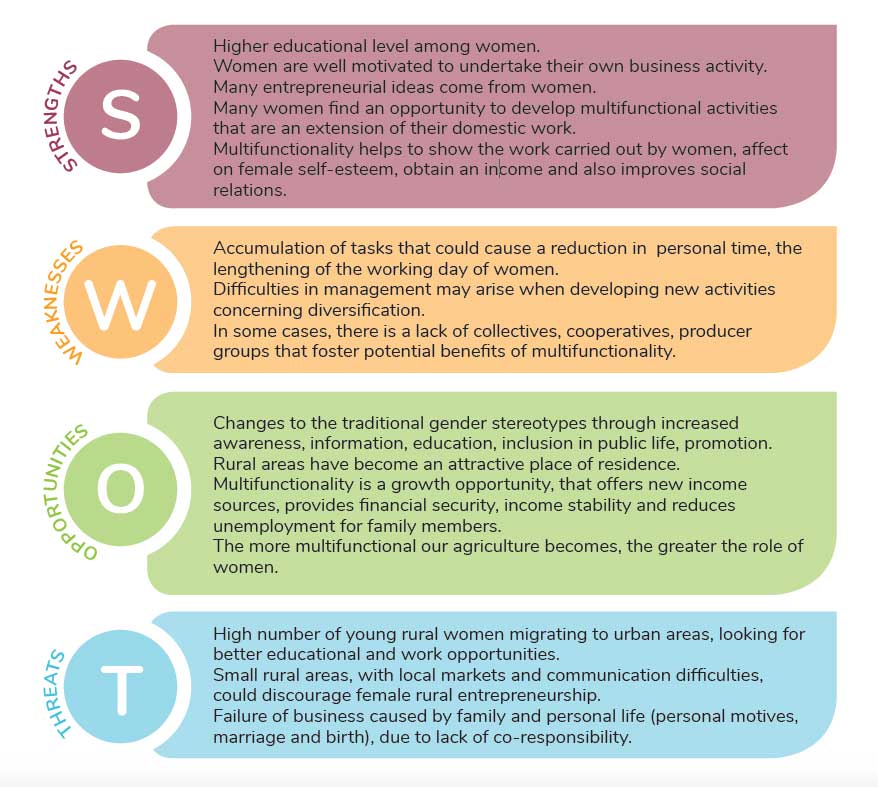
Involvement of women in MF - the example of Poland
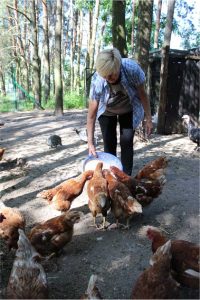
Photo. Educational Farm “Gzinianka”, PL
- According to the research done in Malopolska Province the owner of an agritourism farm is primarily a middle-aged or older woman (usually over 55), most often with secondary education, whose main source of income is mainly work on the farm (CDR Kraków 2015).
- The dominant role of women in running specialised social services on a farm results from the analysis of the national database of Educational Farms. Out of 273 homesteads operating in October 2019, 45% are run by a woman, and another 27% jointly by married couples (CDR Kraków 2019).
- The trend is confirmed by the results of the national survey conducted among farmers and members of farming families. Women accounted for 75% of people interested in running a caring farm (CDR Kraków 2017).
Women succeed in MF – Polish samples
► Zaczarowane Wzgórze (“Enchanted Hill”)
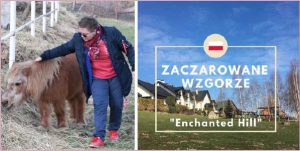 The 11 ha farm “Zaczarowane Wzgorze” located in Czaslaw is run by two women friends who have transformed it into a beautiful agrotouristic farm. They manage horse breeding and farm-based tourist services (accommodation, gastronomy, education, organisation of events).
The 11 ha farm “Zaczarowane Wzgorze” located in Czaslaw is run by two women friends who have transformed it into a beautiful agrotouristic farm. They manage horse breeding and farm-based tourist services (accommodation, gastronomy, education, organisation of events).
► Wiśniowy Gaj (“Cherry Orchard”)
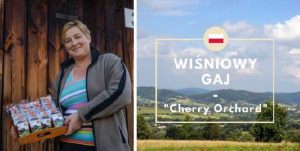 Irena Szewczyk inherited from her family a farm named “Wiśniowy Gaj” surrounded by traditional Polish rural landscape. In this 200-year-old traditional farm, she developed her activities towards the production and sale of regional plums, tourism and educational activities.
Irena Szewczyk inherited from her family a farm named “Wiśniowy Gaj” surrounded by traditional Polish rural landscape. In this 200-year-old traditional farm, she developed her activities towards the production and sale of regional plums, tourism and educational activities.
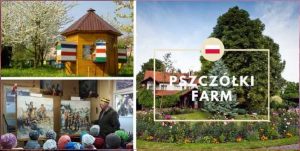 In the last 15 years, Agnieszka Król has transformed her family farm “Pszczółki” into a recreational/educational center. Besides agricultural activities (beekeeping, honey growing & small livestock farming), the farm provides social services (tourist & educational activities).
In the last 15 years, Agnieszka Król has transformed her family farm “Pszczółki” into a recreational/educational center. Besides agricultural activities (beekeeping, honey growing & small livestock farming), the farm provides social services (tourist & educational activities).
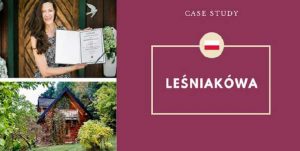 “Leśniakówka”, an ecological farm located close to Krakow. It was developed into an agritourism farm with workshops (yoga, art and cooking) and event organisation. The old orchard and wooden architectural buildings are an added value.
“Leśniakówka”, an ecological farm located close to Krakow. It was developed into an agritourism farm with workshops (yoga, art and cooking) and event organisation. The old orchard and wooden architectural buildings are an added value.
- 3.1.Cultural heritage – definition and types
- 3.2 Role and meaning of cultural heritage for rural development
- 3.3. Promotion and preservation of rural heritage
- 3.4. Cultural heritage in the development of multifunctional activities
There is no clear-cut definition of cultural heritage. It is assumed that cultural heritage is a resource of tangible and intangible things, together with related spiritual values, historical and moral phenomena, recognised as worthy of legal protection for the good of a specific society and its development, and for passing them on to future generations, due to understandable and accepted historical, patriotic, religious, scientific and artistic values that are important for the identity and continuity of political, social and cultural development, proving truths and commemorating historical events, preserving a sense of beauty and civilization community.

Photo. K. Kieljan
Cultural heritage consists of:
The tangible heritage is divided into immovable heritage, including buildings that can themselves contain installed art, and movable heritage, including books, documents, works of art, movable machinery, clothes, and other artifacts that are considered worthy of future preservation. These include objects relevant to archeology, architecture, science and technology with a specific culture.
The intangible heritage includes non-physical aspects in a specific culture. It refers to the ways of behaviour in society, often formal rules operating in a specific cultural context. This includes social and tradition values, customs, aesthetic and spiritual beliefs, language and other aspects of human activity.

Photo. K. Kieljan
Natural heritage is also an important element of society’s heritage, covering rural areas and the natural environment, including flora and fauna, as well as geological elements. This heritage includes cultural landscapes, protection of rare animal breeds and plant species.
Elements of rural cultural heritage:
The tangible heritage:
- architecture - residential houses, palaces, manor houses, religious buildings, outbuildings, agricultural industry buildings, technical heritage, small architecture,
- objects, tools, agricultural machinery,
- castle ruins, cloisters, strongholds,
- landscape - the spatial layout of the village, surrounding fields, meadows, streams, rivers and lakes, hills and forests.
The intangible heritage :
- method of management and manufacturing,
- rites, rituals, customs,
- language in regional and local variations; place names,
- costumes, music, dance, songs, legends, fairytales,
- traditions of family, neighborhood and community life.
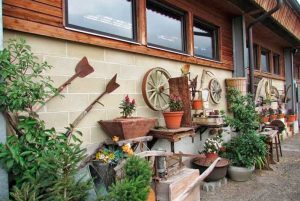
Photo. K. Kieljan
Cultural heritage has an impact on the socio-economic development of the region on several levels. It is perceived as: the basis of local entrepreneurship, the area of innovation, the competitiveness factor, and finally a market product that satisfies the diverse needs of people and affects the quality of life.
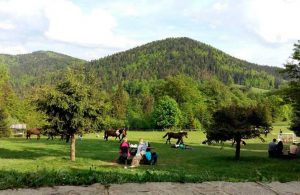
Photo. K. Kieljan
Heritage has the potential to create income and stimulate employment in rural areas, ensuring a better standard of living for residents. Heritage, whose value can be determined, promoted and constantly shared, becomes a product. It can become an important factor in the development of entrepreneurship, enabling the creation of jobs and sources of income for residents, especially in the field of tourism, the manufacturing of regional food products, the production of craft products and the provision of services by representatives of so-called “passing away professions”.
Very important for rural areas is the use of heritage in the development of rural tourism, especially cultural tourism. Tourists willingly visit places to learn about the different manifestations of material and non-material culture: places, historic buildings, cultural landscapes, as well as cultural values, traditions, customs and history. The benefits of rural tourism are diverse. First of all, tourism, by satisfying tourists’ demand for various products and services, generates income and jobs and contributes to the inflow of capital.
The attractiveness of the locality exposing its cultural goods increases its competitiveness, makes it chosen as a place of residence as well as a place of business.
Cultural heritage plays an important role in building social bonds, identity and self-esteem of rural residents, which has a positive impact on the quality of life. The awareness that you are a responsible heir of cultural goods, arouses an emotional attitude towards your own town, creates a sense of community and readiness to take new initiatives for local development. Leaders are emerging who are ready to lead such initiatives.

Photo. K. Kieljan
Cultural heritage is also conducive to ecological and spatial changes. Projects regarding the revitalisation of individual elements of heritage are often associated with giving this heritage new functions (e.g. adaptation of old livestock buildings to rooms for tourists), creation of new jobs (e.g. processing of regional products), and development of tourism (increasing the tourist attractiveness of the area) or restoring the natural heritage of the village.
Depending on the value, elements of heritage may have global, european, national and finally local significance - related to the tradition and history of a specific place, and therefore be subject to various mechanisms of their protection and promotion.
Places that have universal value and are important for people regardless of their origin, culture, religious beliefs, etc. are distinguished by a registration on the UNESCO World Heritage List. Places important for european culture and history receive the European Heritage Label. Individual countries have their own designations for heritage elements especially important for them. Village heritage is a particular heritage, the regional heritage of “small homelands” that builds a sense of community, affects identification with a place, and forms part of a community’s identity

Photo. K. Kieljan
The protection and promotion of heritage are dealt with by relevant institutions and organisations but also by local communities, and finally by a single inhabitant of the village. Heritage preservation is the success of the inhabitants, local government representatives, local leaders and specialists as well as national authorities to preserve the common good. This is served by international and national legal regulations, as well as programmes supporting activities serving the protection and promotion of heritage. These activities can be implemented through various projects, and their financing can be offered by companies and individuals, domestic or foreign grant organisations, public administration, foreign public sources, including EU programmes.
Activities related to the protection and care of tangible heritage objects include: placing historic objects in registers of monuments, on lists of historical monuments, in regional monument records, creating cultural parks, giving forms of nature protection and protection in the local spatial development plan, placing the object in the local revitalisation programme and commune development strategy, security, conservation and anti-destruction work.
Activities to protect the intangible heritage include research and dissemination works on local tradition and history. Geographical, historical or traditional names of a building object, square, street or settlement unit may be protected. Regional and traditional products can be protected by placing them in national and european mechanisms to identify and promote the culinary heritage of the regions.
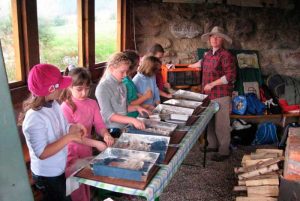
Photo. Educational Farm “Kowalowe Skały”, PL
Activities aimed at protecting and promoting are primarily the promotion and education in the field of rural heritage. Such activities include lessons, museum workshops, heritage days, teaching traditional professions, artistic education, heritage-based entertainment activities: historical reconstructions, festivals, fairs, dissemination and sharing of heritage in the form of entertainment, educational activities of farms, activities of state entities, private and associations to promote heritage. Marketing through advertising and specialist promotional publications, educational programmes and multimedia products, as well as the development of tourist products based on heritage are important.
Cultural heritage can be a source and inspiration to create products, services and economic initiatives by generating employment in numerous sectors: both in the tourism sector as well as construction and real estate, trade and heritage education. Heritage is part of the economy and can be the basis for the development of entrepreneurship and multifunctional activities in the following industries:
- Cultural Tourism
- Creative industry of cultural heritage
- Protection of cultural heritage
- Historic real estate
- The art and antiques market industry
- Popularisation and education of the heritage industry
- Traditional crafts and agriculture
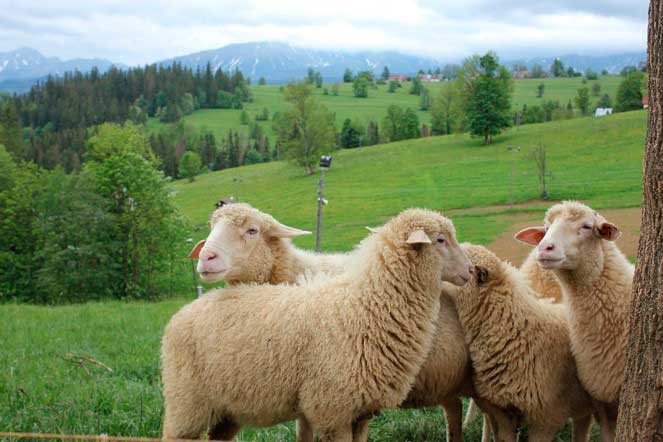
Photo. CDR O/Kraków
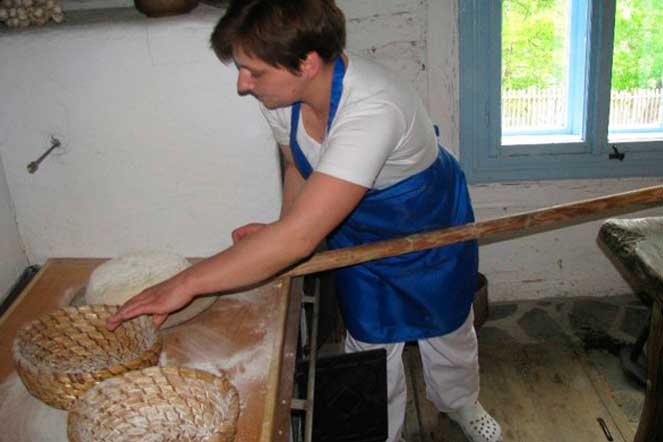
Photo. K. Kieljan
For rural areas, an important role is played by cognitive, cultural and educational tourism, which determine the need to develop entrepreneurial activities presenting the specificity of the local heritage not only through traditional sightseeing methods but also independent discovery, experience, and taste. Such activities are an opportunity for women in rural areas to develop their own competences, find a job and additional sources of income while enabling tourists to get to know the values of an area, its heritage and culture, rural activities and rural life, authentic interaction with the rural environment and local community.
The most popular forms of entrepreneurial use of heritage in rural areas with using a functioning farm may include:
- Tourist activities, including agrotourism - landscape heritage
- Production and sale of local and regional food products, regional inns, culinary workshops - culinary heritage
- Production of craft and handicraft products and provision of services by representatives of so-called “passing away professions” - craft and industrial heritage
- Activities of rural museums, open-air museums, etc. - Architectural heritage
- Educational activities of farms - various elements of heritage
- Agricultural activity - breeding of old and endangered animal breeds and cultivation of traditional plant varieties - agricultural heritage.
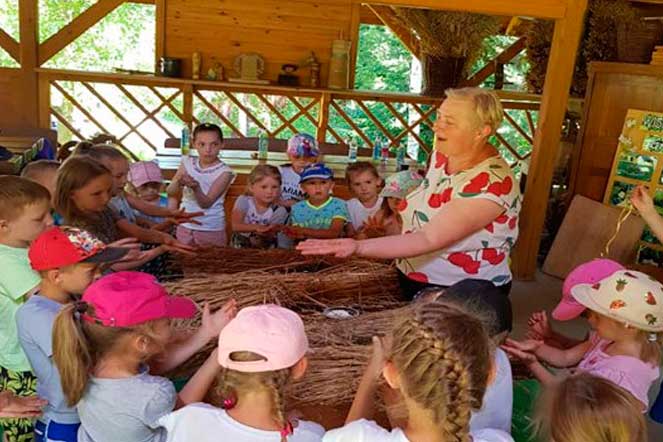
Photo. Educational Farm “Wiśniowy Gaj”, PL
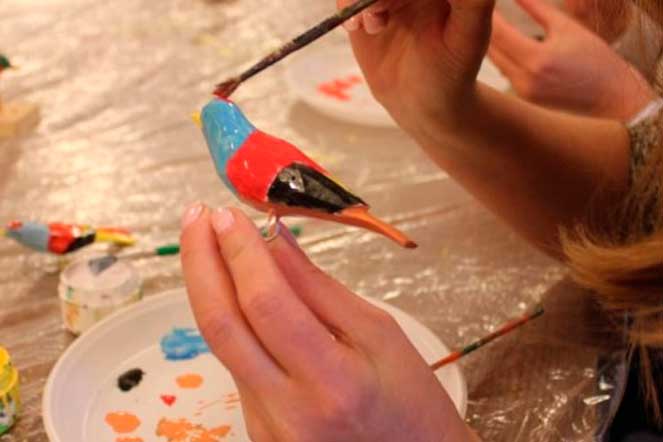
Photo. K..Kieljan
Of course, it is possible to conduct various activities using simultaneously different elements of tangible and intangible heritage. Such an example is the educational activities of farms, where the potential of many elements of rural heritage is often used simultaneously.
The use of heritage for the development of entrepreneurship can be very diverse, covering a wide spectrum of economic activity, and the combination of traditions (places, products, skills, professions) with innovation (modern methods of processing, presentation, sales) causes that often innovative and competitive products and services are created.
Elements of rural cultural heritage as a potential for the development of multifunctional activities:
- LANDSCAPE (open landscapes, agricultural areas, rural greenery - fields, pastures, natural landscapes; organisation of space; communication routes; crosses, chapels, cemeteries; tourist paths and routes)
► example – Zaczarowane Wzgórze, PL - ARCHITECTURE (farm buildings - houses, barns, granaries; castles, palaces, manors; rural industry buildings - mills, sawmills, forges, distilleries; folk houses, taverns; religious buildings)
► example – El Madroño, ES - AGRICULTURE AND FISHERIES (natural wealth, old and endangered animal breeds and traditional varieties of arable crops, traditional and ecological production, fisheries heritage)
► example - The Potočnik Poprask Organic Farm, SL/ Orellana Perdiz, ES - CULINARY TRADITIONS (local, traditional and regional products and dishes, culinary tourism)
► example – Wiśniowy Gaj, PL - CRAFTS AND INDUSTRIAL TRADITIONS (recreation of craft traditions, preserving industrial traditions, education - acquiring new skills)
► example - Erna Korošec, SL - FAMILY, NEIGHBORHOOD, COMMUNITY (preserving and recreating traditions, rituals, customs, traditions, proverbs, dance, music, costumes etc. - meetings, holidays, fairs, festivals)
► example - Vladimíra Křenková, CZ
- The starting point is European policy of sustainable multifunctional development of rural areas. The general concept of Multifunctional Agriculture means that, in addition to producing food, agriculture has other functions such as preserving of rural landscapes, improvement of natural and cultural heritage, support of the rural economy and enhancement of food security.
- Following the above idea the specific concept of Multifunctional Farming is concerned with the new economic activities taken by rural families within the farm in addition to conventional farming. This concept refers to non-agricultural activities located at the farm and closely linked to farming and rural heritage. Farmers combine their agricultural production and farm environment with services to society such as for example: farm shops/short chains, agrotourism, farm education or care farming.
- Women play an important role in rural development. Women are predisposed to multitasking and social activities. They have many unique skills and represent the natural potential for entrepreneurship development in the field of multifunctional agriculture and cultural heritage.
- There are many good examples of women’s involvement in multi-functional agriculture and cultural heritage. They prove that professional services based on the farm and rural environment resources could be a chance for commercial success of rural women and they inspire women to the implementation of individual development projects.
UNIT 1
- What is the situation of women in your country in general?
- Do you think that EU action is sufficient and adequate to the needs of women in rural areas?
If not, - What measures should the EU take to bring about measurable improvements to the situation of women in rural areas in Member States?
UNIT 2
- What do you think about the idea of multifunctional agriculture?
- Do you find examples of women's activities in multifunctional farming in your close or further surroundings? If so, what kind?
- How do you assess your resources and possibilities to run your own business in multifunctional farming?
- What are the most important advantages to your farm in the context of MF and why?
UNIT 3
- Can you identify elements of cultural heritage around you?
- Do you see elements of cultural heritage to be used in starting or developing a business/multifunctional activity within your environment?
- Which elements of cultural heritage in your environment are the most valuable to you and why?
- What activities could you use to preserve and promote cultural heritage?
Click on the button below to start the Self-assessment.
- http://www.fao.org/3/w9778e/w9778e05.htm
- https://www.euractiv.pl/section/rolnictwowpr/special_report/kobiety-i-mlodzi-ludzie-w-rolnictwie
- https://europa.eu/european-union/about-eu/funding-grants_en
- https://ec.europa.eu/info/policies/agriculture-and-rural-development_en
- https://ec.europa.eu/growth/smes/promoting-entrepreneurship/we-work-for/women/support-networks_en
- https://ec.europa.eu/growth/smes/promoting-entrepreneurship/we-work-for/women_en
- https://op.europa.eu/webpub/com/factsheets/women/pl/
- https://ec.europa.eu/info/food-farming-fisheries/key-policies/common-agricultural-policy/future-cap_en#a-new-way-of-working
- C 347/38 EN Official Journal of the European Union 18.12.2010
- Jan Douwe van der Ploeg, Wageningen University and Research Centre, the Netherlands
- Wagenigen University &Research, https://www.wur.nl/en/Dossiers/file/Multifunctional-agriculture.htm
- Report of the European Parliament of 8.3.2017 on women and their role in rural areas (2016/2204 (INI))
- Socio-economic impact of cultural heritage. Report on social research, National Institute of Heritage, Warsaw 2013
- A thing about rural heritage - advice, examples, information, Rural Development Foundation, Warsaw 2011
- Comprehed heritage - a handbook of good practices for disseminating heritage and education about cultural heritage, Katarzyna Zarzycka, National Institute of Heritage, 2016
- Cultural heritage as a factor in the development and specialization of regions, Paulina Legutko-Kobus, Warsaw School of Economics, 2016
- Heritage next to me - a guide to managing heritage in municipalities, National Heritage Institute, 2016
- https://pl.wikipedia.org/








